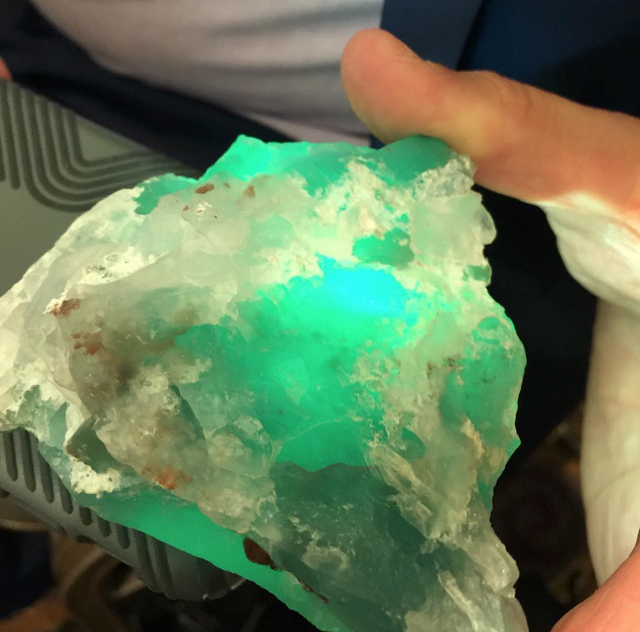SEEING RED!
 Rare as they are, fancy colored diamonds are popping up all over the auction world lately. And from the looks of their sales, our sluggish economy is not so much dampening the fervor for collecting these anomalies of the gem world.
Rare as they are, fancy colored diamonds are popping up all over the auction world lately. And from the looks of their sales, our sluggish economy is not so much dampening the fervor for collecting these anomalies of the gem world.Red diamonds almost never occur; when they do, they are often found in very small crystals. The largest red to have been graded at GIA's laboratories thus far seems to be the Moussaieff Red Diamond weighing in at 5.11 carats. Neat.
The Kazanjian Red shown here is of exceptional clarity, with a cranberry red hue, beautifully shaped into a clipped corner step cut, and weighs 5.05 carats. As a 35 carat crystal found in 1927, there was little indication that a spectacular stone lay hidden inside--until the Dutch cutter polished a window on it to sneak a glimpse of its internal characteristics. Holy Cannoli! What shown out from within appeared like a drop of blood on the master cutter's hand.
The impression of red observed in a diamond crystal is likely the result of a crystal lattice deformation that occurred during the stones' formation. And among this group of rarities, it is even more unlikely that such a crystal will be deemed straight red. A purple, orange or brown backcolor may contribute to its final appearance.
One of the largest natural red diamonds to exist, the De Young red diamond, was bought on a hat pin at a flea market by an estate jewelry dealer and subsequently given to the
Photo of Kazanjian Red Diamond: Kazanjian Brothers,


Comments